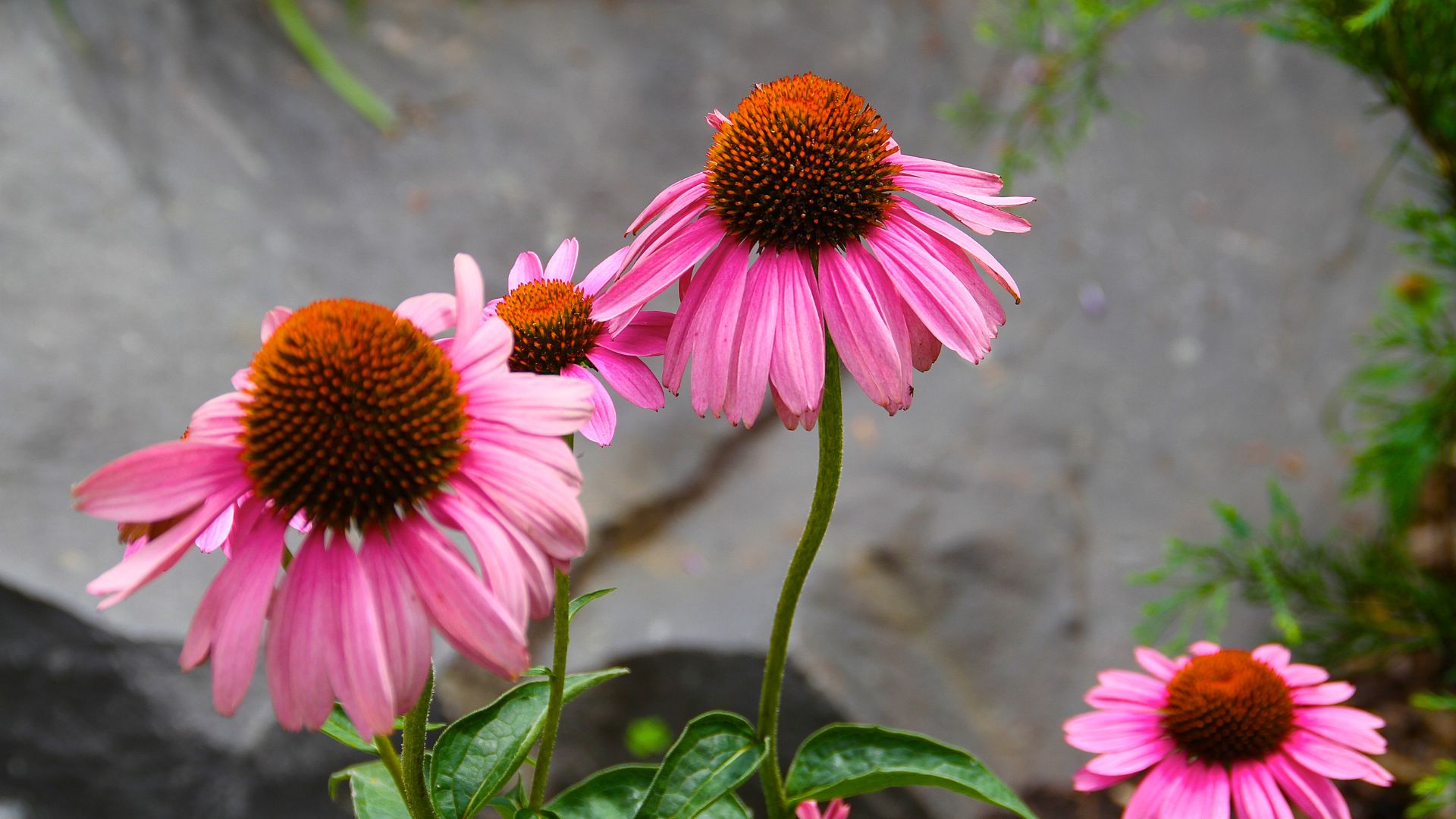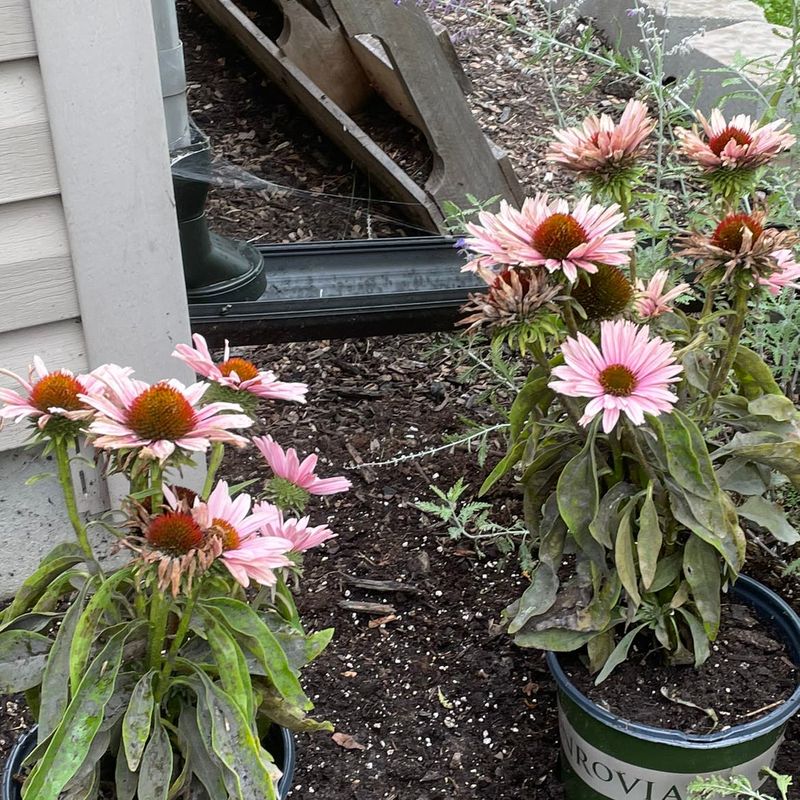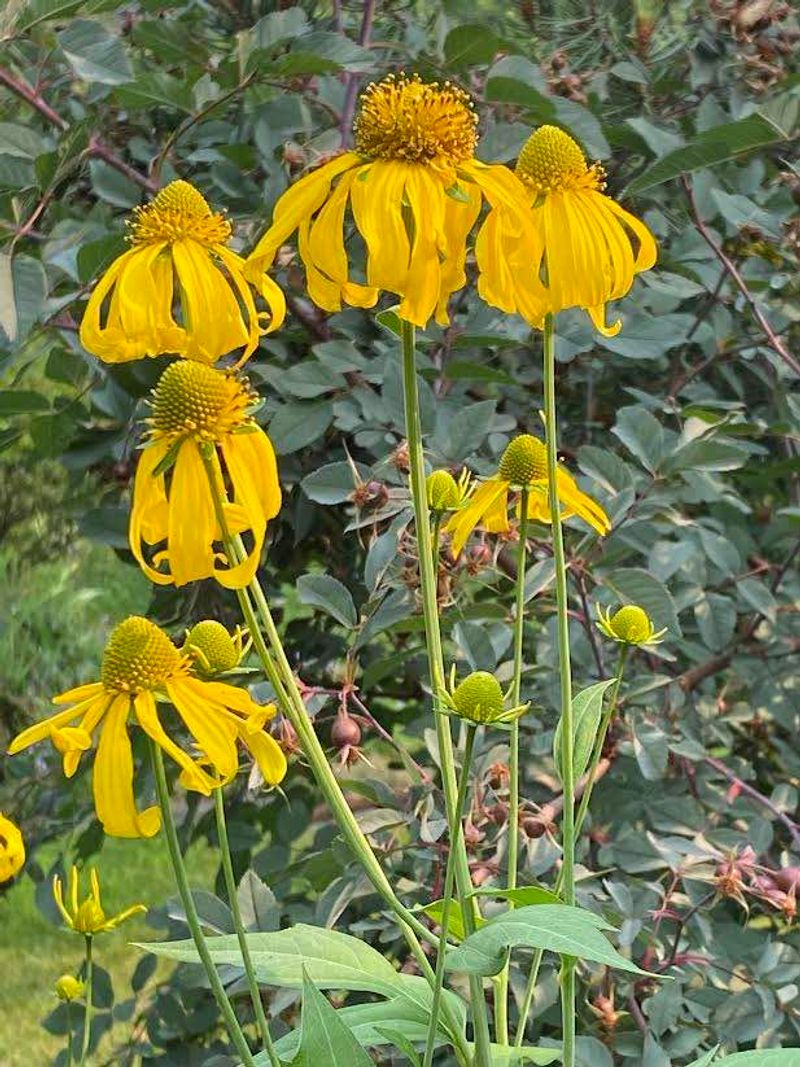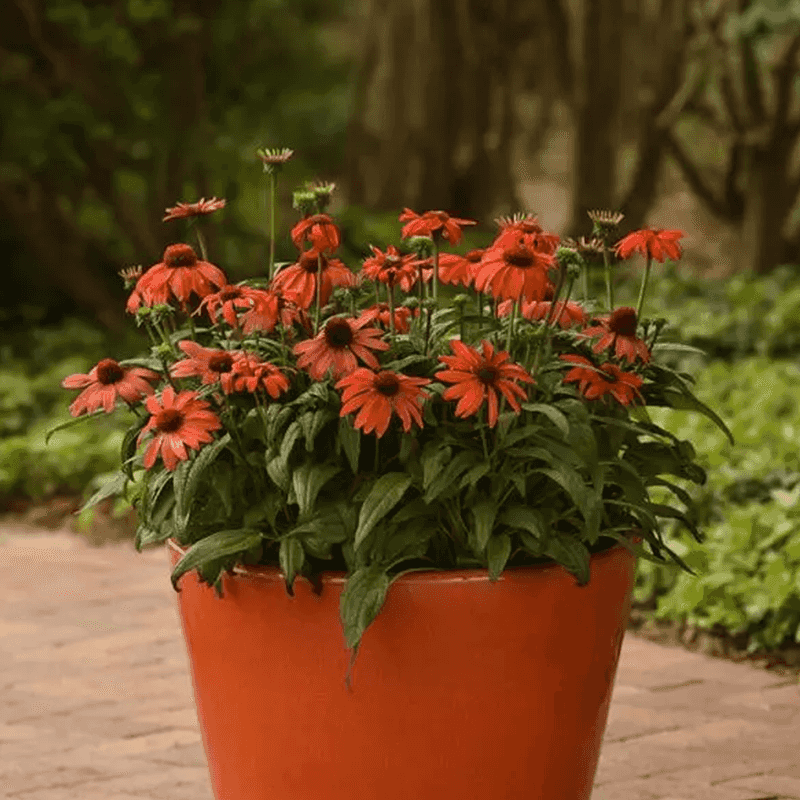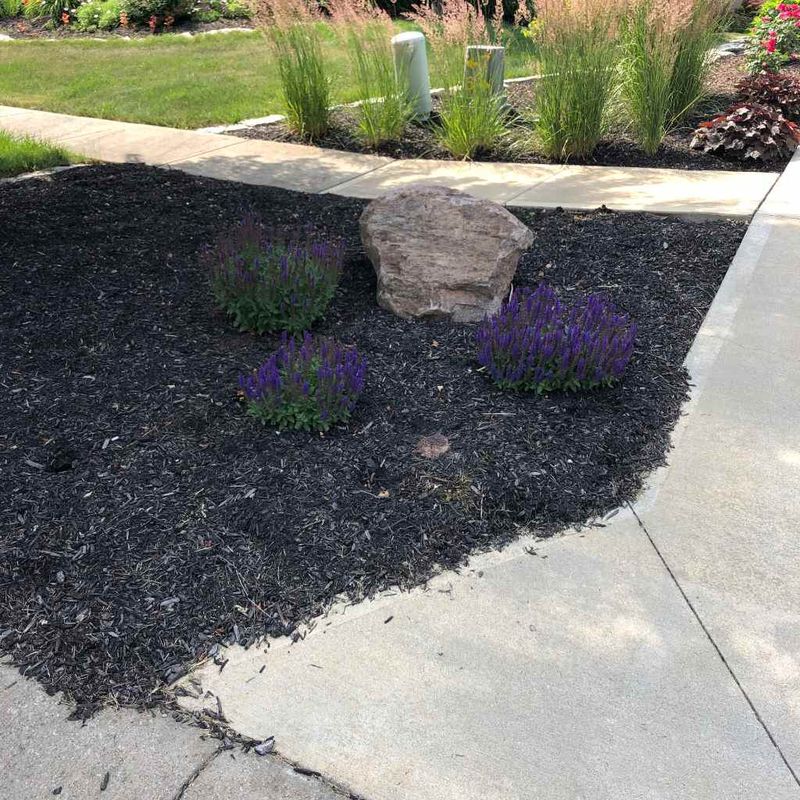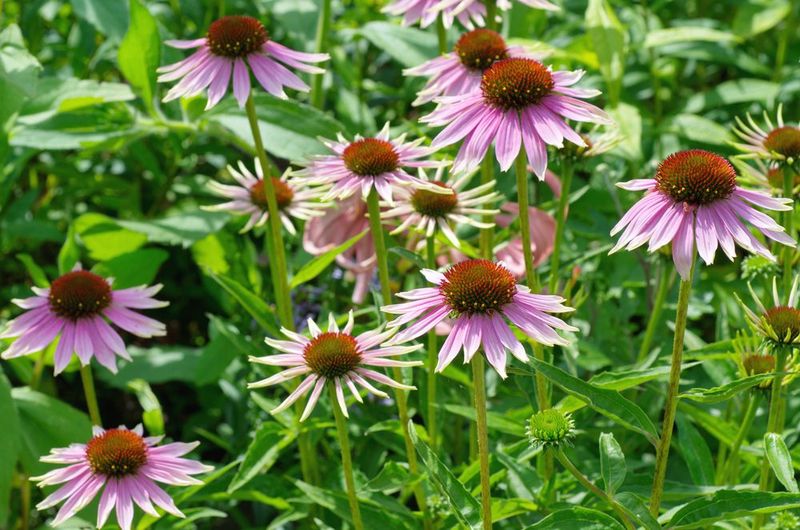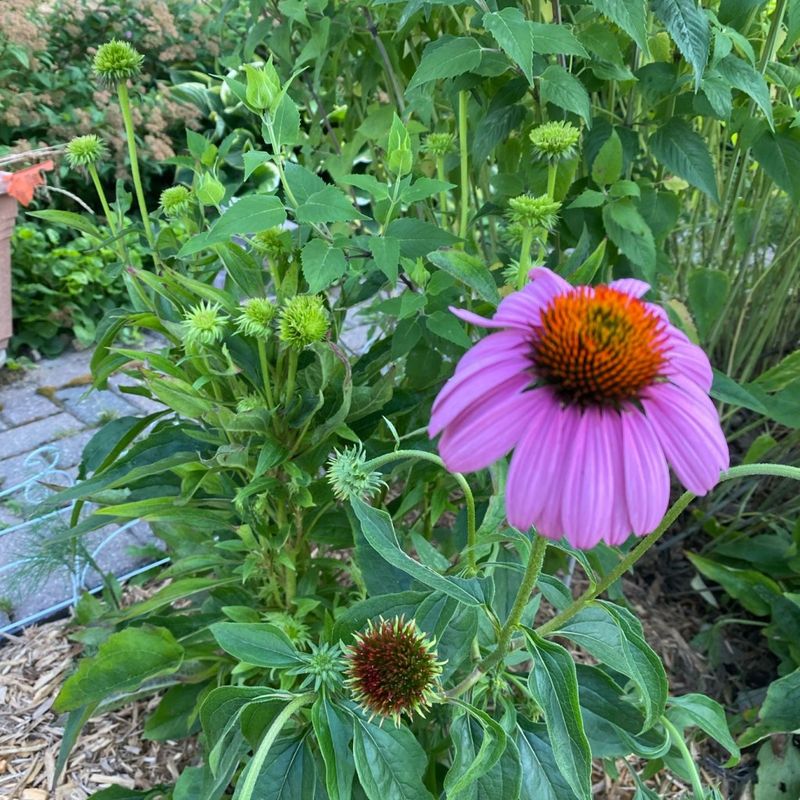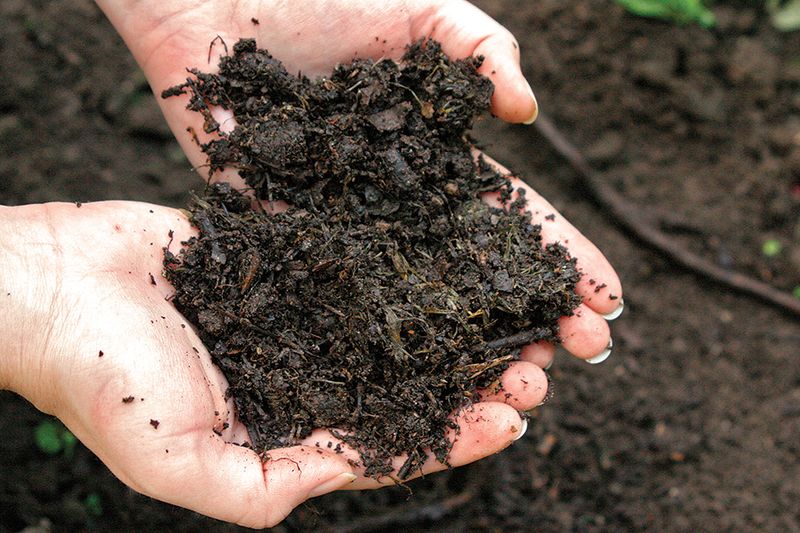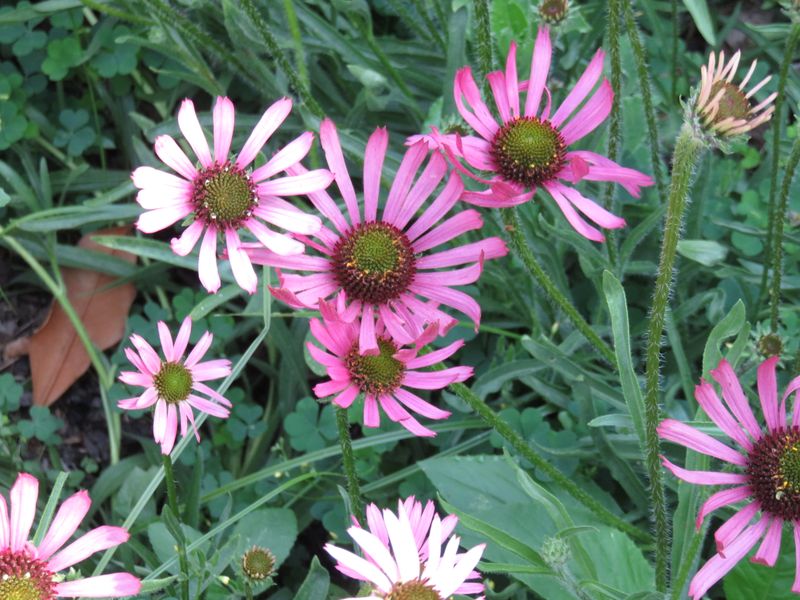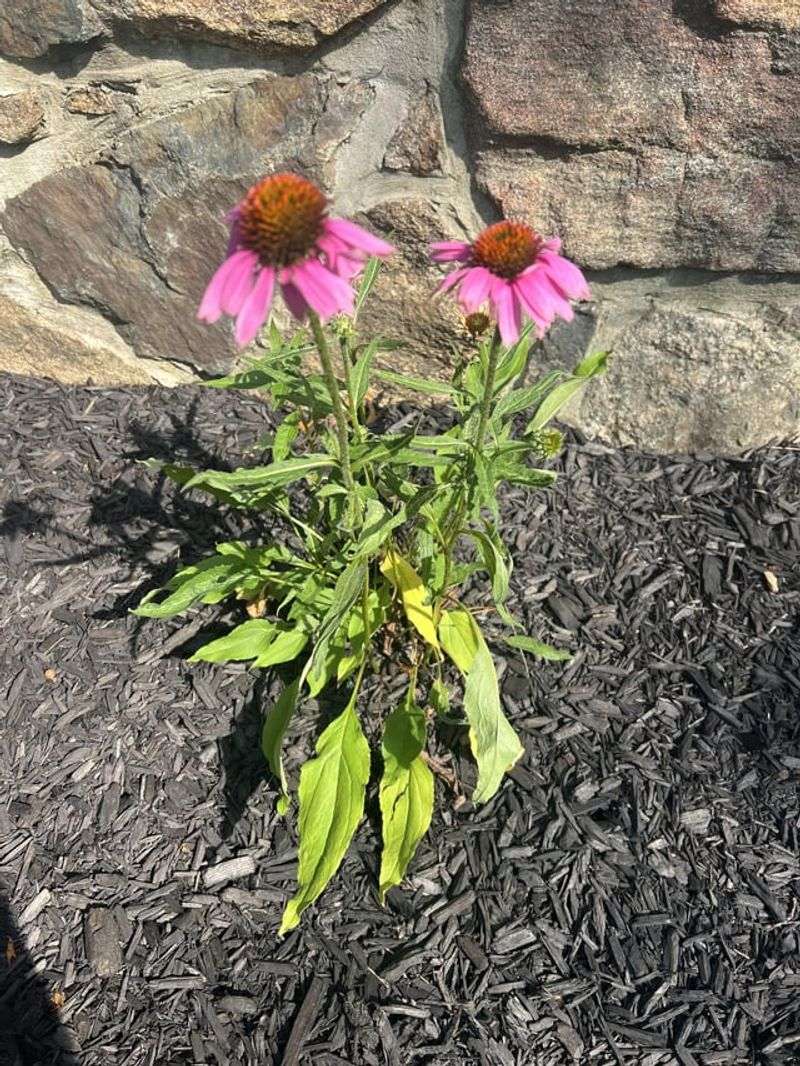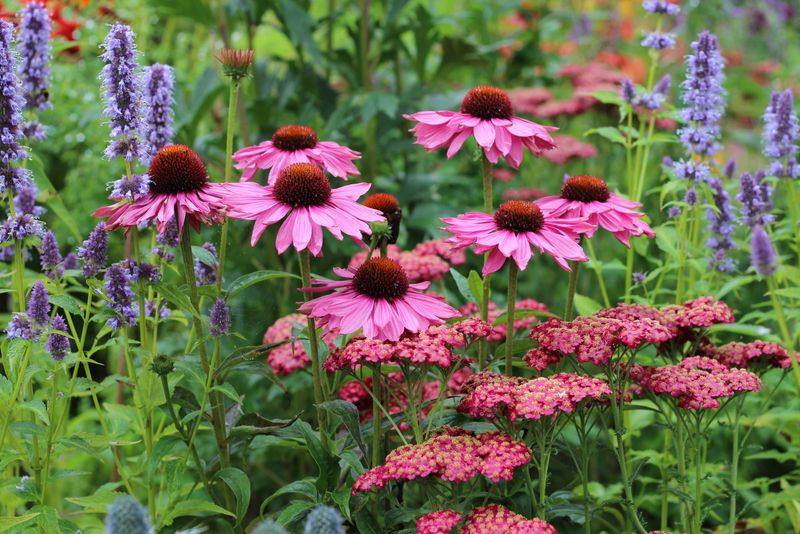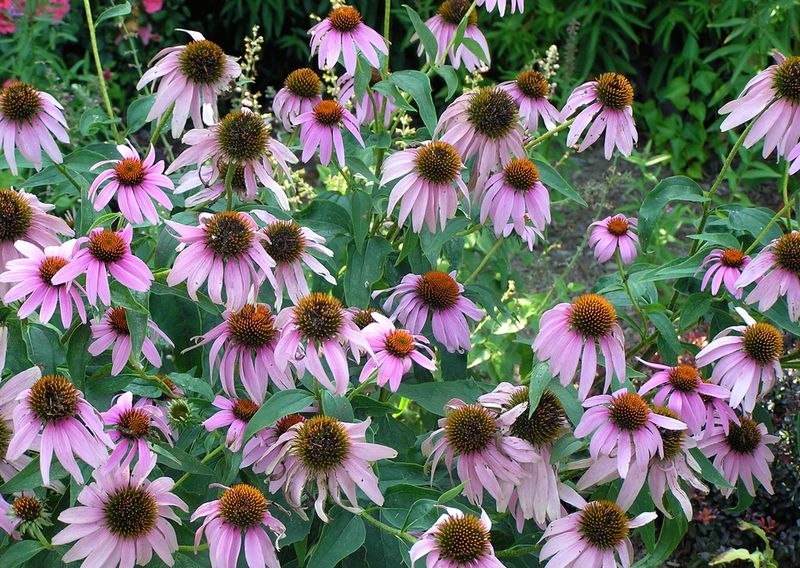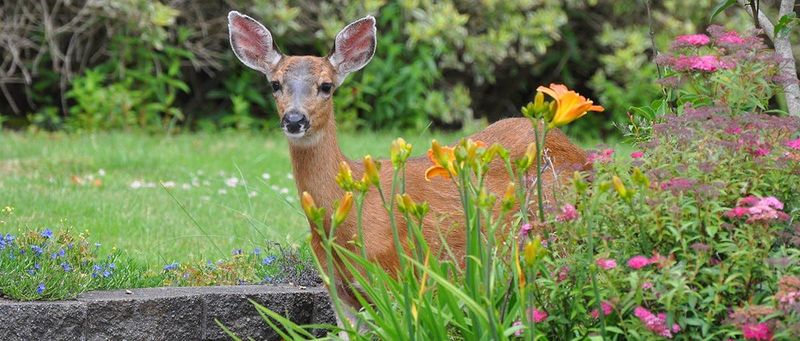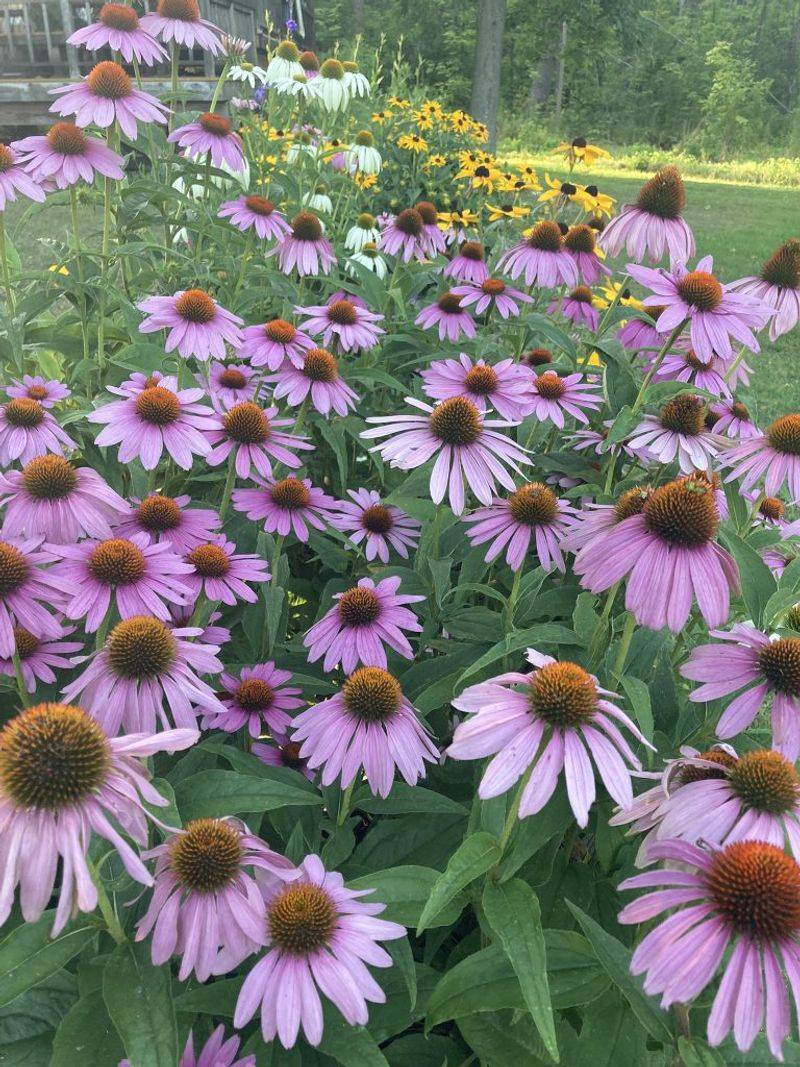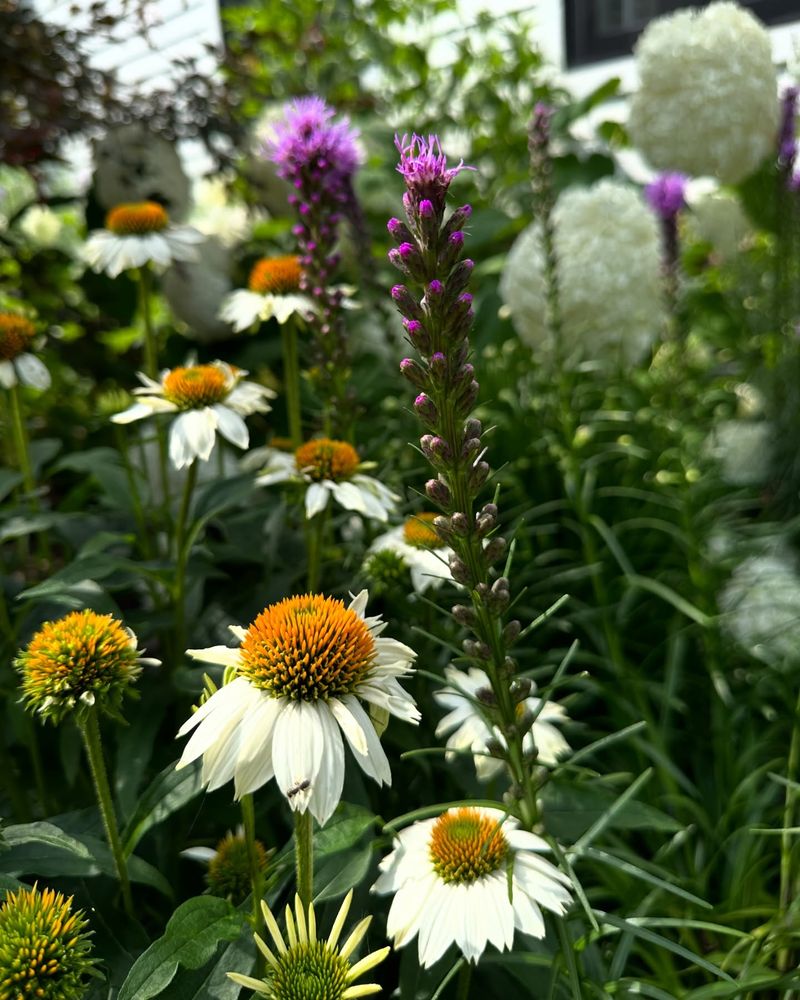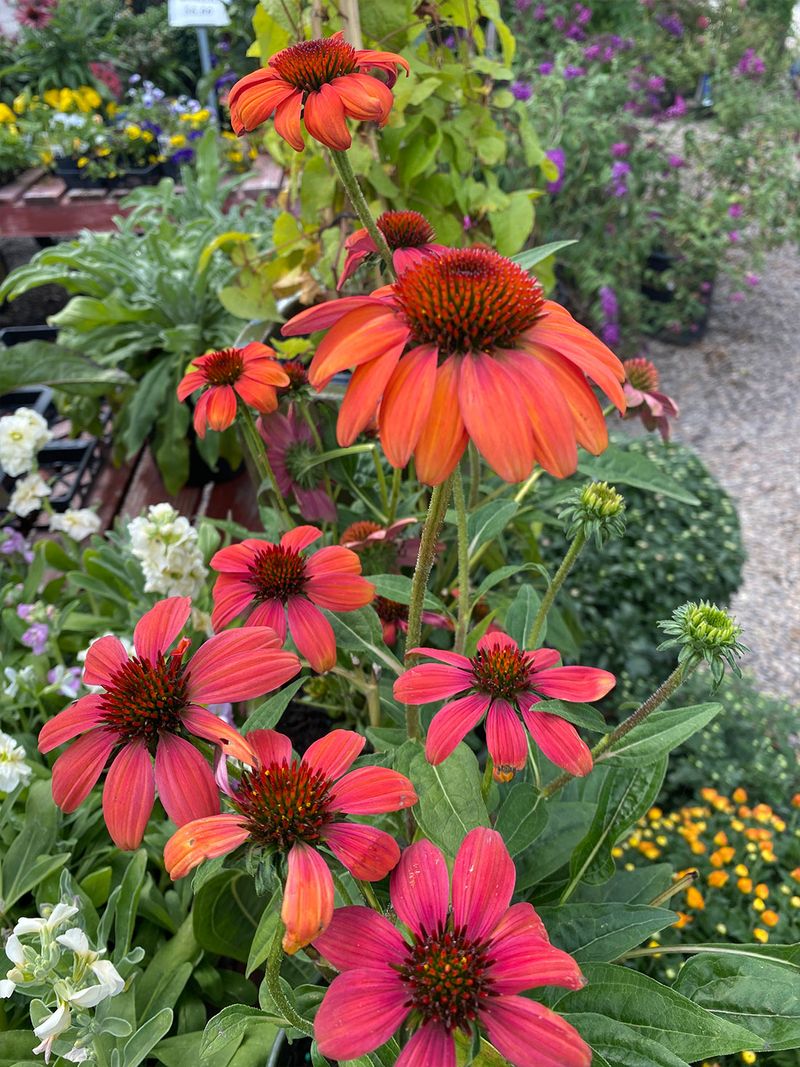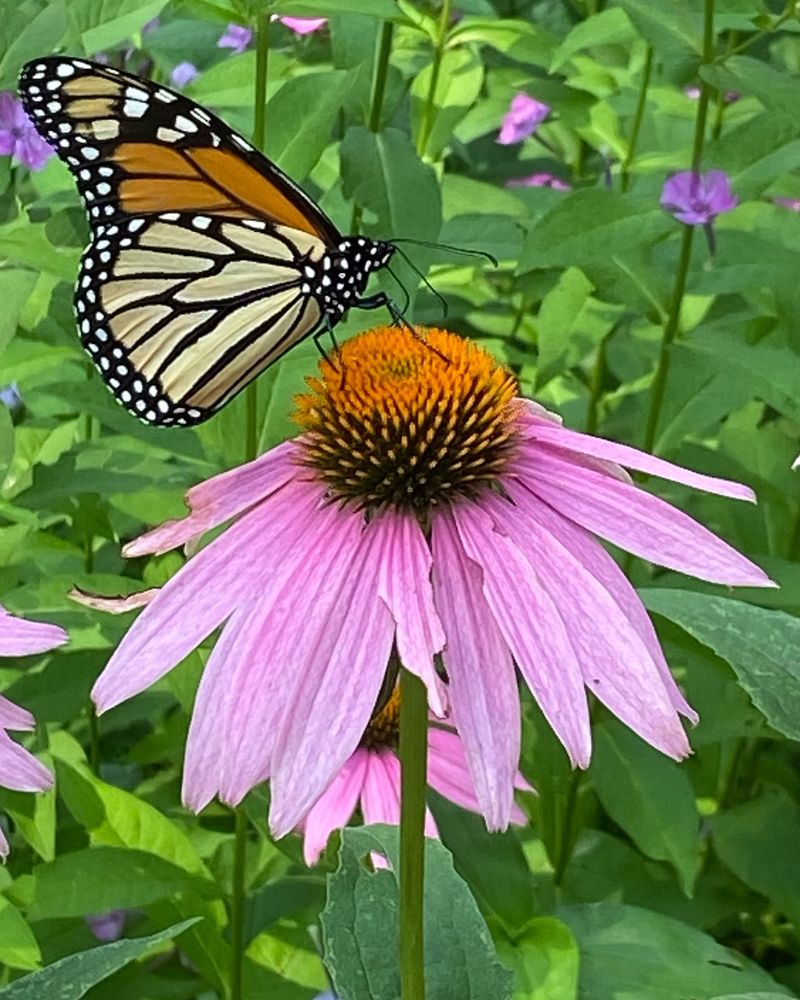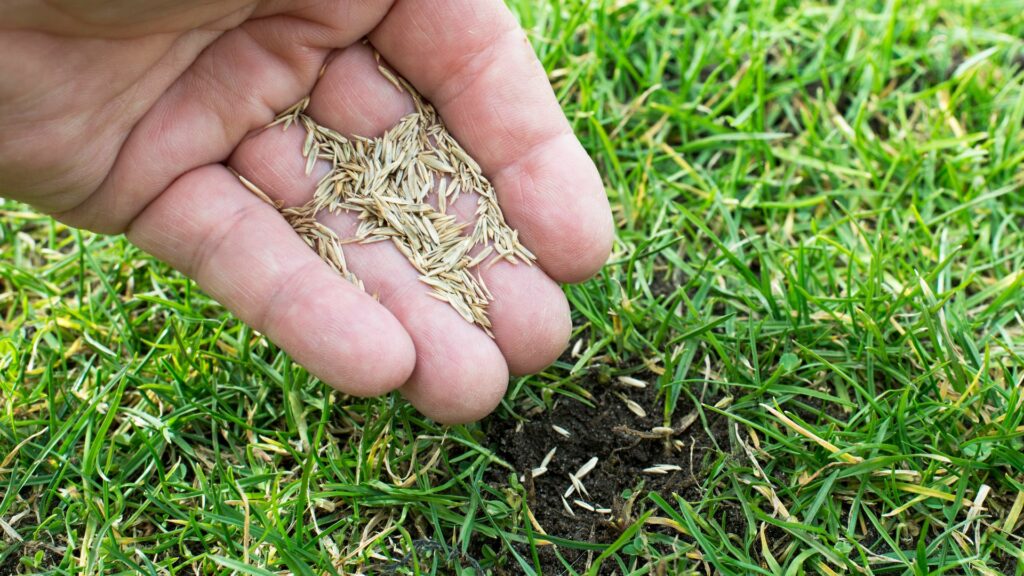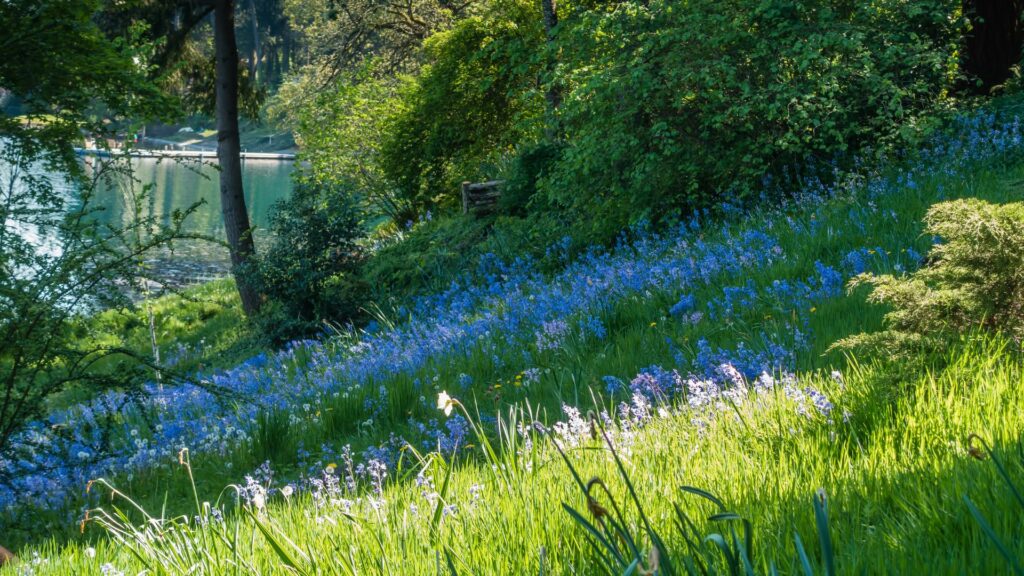Coneflowers have become the darlings of many gardens, with their cheerful daisy-like blooms and reputation for being nearly indestructible. But I’ve learned the hard way that these prairie natives aren’t quite as bulletproof as garden centers might have you believe.
Last summer, I watched my carefully planted coneflowers struggle in what I thought was a perfect spot along my fence line. The plants remained stunted, produced few blooms, and eventually gave up entirely. That’s when I realized even these tough plants have their limits.
Whether you’re new to gardening or just new to coneflowers, knowing where not to plant them can save you time, money, and disappointment. Here’s my real-world guide to where these beautiful perennials will struggle—and where they’ll reward you with those signature cone-shaped blooms year after year.
1. Soggy, Poorly-Drained Soil
Nothing kills a coneflower faster than wet feet. I planted a patch near my downspout one spring, only to watch them rot within weeks.
Coneflowers evolved on the prairies where water drains quickly. Their roots simply can’t handle standing water or consistently damp conditions. If your soil stays wet for hours after rain or forms puddles regularly, you’ll need to improve drainage or choose a different spot.
Clay-heavy soils are particularly problematic since they hold moisture against the roots. Save yourself the heartache and avoid any area where water collects or drains slowly.
2. Deep Shade Areas
Coneflowers crave sunshine. My neighbor tried growing them under her maple tree, and they stretched into sad, lanky stems with tiny flowers that flopped over pathetically.
These prairie natives evolved in open grasslands where they bathed in sunlight all day. When planted in shade, they’ll desperately reach for light, producing weak stems and few blooms. The plants become more susceptible to disease in these conditions too.
Areas under dense tree canopies, the north side of buildings, or spots that receive less than 6 hours of direct sun daily will leave you with disappointing results.
3. Crowded Container Gardens
Coneflowers develop extensive root systems that quickly become cramped in containers. I tried growing them in a half-barrel planter with other perennials, and they looked fantastic—for exactly one season.
By the second year, they were struggling to compete for limited resources. Their root system simply needs more space than most containers provide. Even large pots eventually become restrictive, leading to stunted growth, fewer flowers, and increased susceptibility to stress.
If containers are your only option, be prepared to divide plants annually or accept their gradual decline.
4. Heavily Mulched Areas
The mulch obsession in modern gardening has claimed many coneflower victims. Last year, I piled fresh wood chips around my established plants, thinking I was doing them a favor.
Big mistake. Excessive mulch creates a constantly moist environment around the crown of the plant—exactly what coneflowers hate. This moisture trap invites crown rot, especially during rainy seasons or in humid climates. Thick mulch can also prevent self-seeding, one of the delightful natural habits of these plants.
If you must mulch, keep it thin (1-inch maximum) and pulled back from the stems.
5. Near Aggressive Spreaders
My beautiful coneflowers disappeared within two seasons after I planted them near mint. The battle wasn’t even close.
Coneflowers grow at a moderate pace and can’t compete with garden thugs like mint, bishop’s weed, or aggressive ornamental grasses. These botanical bullies quickly overrun the coneflowers’ root space, stealing water and nutrients. Even seemingly innocent plants like black-eyed Susans can outcompete coneflowers in rich soil.
Give your coneflowers their own territory or pair them only with equally well-behaved perennials that won’t try to steal their lunch money.
6. Highly Acidic Soil
Coneflowers developed in prairie environments with neutral to slightly alkaline soils. When I planted some near my azaleas and rhododendrons, they barely grew and produced few flowers.
The soil pH was the culprit. These acid-loving shrubs thrive in soil that’s simply too acidic for coneflowers to access the nutrients they need. Soil with pH below 6.0 locks up certain minerals essential for coneflower health, resulting in yellow leaves and poor performance.
Before planting, test your soil. If you’re growing plants that need acidic conditions, find another spot for your coneflowers.
7. Freshly Amended Vegetable Gardens
The rich, heavily fertilized soil of vegetable gardens seems like it would be perfect for any plant. My coneflowers disagreed when I tried this approach.
Too much nitrogen—common in vegetable garden soil—produces lush, floppy growth in coneflowers. The stems grow tall quickly but can’t support themselves, leading to plants that topple over. Excessive fertility also reduces flowering, as the plant focuses on leaf production instead of blooms.
Coneflowers evolved in lean prairie soils, and they perform best when not overfed. They’ll reward you with more flowers and stronger stems in average soil.
8. Coastal Salt Spray Zones
The oceanfront cottage garden I dreamed of planting with coneflowers taught me a harsh lesson about salt tolerance. Within weeks, the leaf edges browned and the plants declined steadily.
Coneflowers have little resistance to salt spray or salt-laden soils found in coastal areas. The salt damages their tissue and disrupts water uptake. Areas within a quarter mile of saltwater shorelines, especially those facing prevailing winds, can receive enough salt spray to stress these prairie natives.
If you garden near the coast, either provide substantial wind protection or choose true salt-tolerant species instead.
9. Hot, Reflected Heat Locations
The south-facing wall of my garage seemed like a perfect spot for sun-loving coneflowers. By July, they were crispy and miserable.
While coneflowers need sunshine, locations with intense reflected heat can be too much of a good thing. Areas next to walls, especially those with light-colored siding or brick, can create a microclimate that’s significantly hotter than the surrounding garden. The same goes for spots near large concrete or paved areas.
These locations create drought conditions and heat stress that even tough prairie plants can’t handle without constant attention to watering.
10. Formal, Heavily Manicured Gardens
Coneflowers have a wild heart that rebels against too much control. My attempt to incorporate them into a formal knot garden was a design disaster that required constant maintenance.
Their natural growth habit is somewhat loose and informal. They self-seed enthusiastically, spread gradually, and don’t maintain perfectly tidy shapes. In formal gardens with sharply defined edges and strict design elements, coneflowers quickly look messy and out of place.
Their seed heads, while valuable to wildlife, can appear untidy to those seeking perfect order in the garden. Better to embrace their prairie spirit in more relaxed settings.
11. Compacted Soil Areas
The strip along my driveway seemed like a perfect sunny spot for coneflowers. But despite the sunshine, they remained stunted and produced few blooms.
The culprit was compacted soil from years of foot traffic and construction. Coneflowers develop deep taproots that struggle to penetrate dense, compacted earth. Without the ability to send roots down deeply, they can’t access enough water during dry spells or anchor themselves properly.
Areas near pathways, play zones, or construction sites often have invisible compaction issues that will limit coneflower performance, even if other conditions seem ideal.
12. Windy, Exposed Hilltops
The panoramic view from my garden’s highest point seemed like a showcase spot for coneflowers. Mother Nature disagreed.
Constant wind exposure creates stress that even prairie plants aren’t equipped to handle in garden settings. Coneflowers in such locations often develop shorter stems as a survival mechanism but still suffer broken stems during storms.
The excessive air movement also increases water loss through the leaves, creating drought-like conditions even with regular rainfall. Without the extensive root system they would develop in true prairie conditions, garden coneflowers need more protection from persistent winds.
13. Deer Highways
The woodland edge of my property taught me that deer don’t read the “deer-resistant plant” lists that coneflowers often appear on. They devoured my purple coneflowers overnight, leaving nothing but stems.
While mature coneflowers with their bristly leaves aren’t a deer’s first choice, hungry deer will absolutely eat them, especially the tender new growth and flower buds. Locations along established deer paths or near woodland edges are particularly vulnerable to browsing.
In high-deer areas, coneflowers need protection until established, and even then may suffer damage during food-scarce periods like early spring or drought.
14. Well-Drained, Sunny Borders
After my many coneflower failures, discovering the perfect spot felt like striking garden gold. The sunny border along my fence with its well-draining soil has produced spectacular blooms for three straight seasons.
Coneflowers thrive in locations that mimic their native prairie conditions—sunny spots with soil that drains quickly but retains some moisture. This border gets full morning sun and afternoon light dappled by distant trees, creating ideal conditions.
The slightly elevated bed ensures water never pools around roots, while the soil’s loamy texture holds just enough moisture to keep plants happy between rains.
15. Meadow Gardens
Converting part of my lawn to a meadow garden created coneflower heaven. They’ve not only thrived but multiplied, creating a self-sustaining community that improves each year.
These prairie natives feel right at home among grasses and other wildflowers in a naturalistic setting. The diverse root systems of meadow plantings create soil conditions that coneflowers love—loose, well-aerated, and moderately fertile.
The surrounding plants provide just enough competition to keep growth compact and floriferous. As a bonus, the natural ecosystem attracts pollinators and beneficial insects that help keep pest problems in check.
16. Rock Gardens
My sloped rock garden has become coneflower paradise. The excellent drainage and heat retention of the rocks perfectly mimics their native growing conditions.
Coneflowers evolved in areas with rocky, well-drained soil, making rock gardens an ideal setting. The stones protect the crown from excess moisture while radiating gentle warmth that extends the growing season. Their taproots can navigate between rocks to find pockets of soil and moisture.
In this setting, coneflowers develop their most compact, floriferous form and show remarkable drought tolerance once established. The rocks also provide protection from some pests like voles.
17. Butterfly Gardens
The transformation was magical when I grouped coneflowers with other butterfly-friendly perennials. Not only did the plants thrive, but they became wildlife magnets that brought my garden to life.
Coneflowers are pollinator superstars, attracting butterflies, bees, and later, seed-eating birds. When planted in communities with other native flowering plants like bee balm, liatris, and asters, they create a balanced ecosystem. These companion plants often have similar growing requirements, ensuring everyone thrives.
The diversity of root systems improves soil health, while the various bloom times provide season-long interest and resources for wildlife.
18. Newly Seeded Lawns
In a moment of overconfidence, I tried tucking coneflower seedlings into a freshly seeded lawn border. Let’s just say the grass wasn’t the only thing that failed to thrive.
New lawns often require frequent watering, which creates persistently damp conditions that coneflowers dislike. The competition for light and moisture from germinating grass also sets young perennials back significantly. Add in the risk of fertilizer burn from lawn feed, and you have a recipe for disappointment.
Wait at least a season or two before introducing coneflowers near newly established lawns to give both the grass and your flowers a fair shot.
19. Sloped South-Facing Wildflower Banks
This unassuming strip of land on a gentle, south-facing slope turned out to be an absolute haven for coneflowers. The drainage is excellent, and the midday sun keeps the site warm and dry—just what prairie plants love.
Planting on a slope mimics their natural habitat while giving the roots space to spread and anchor. Combine them with other native wildflowers like coreopsis or little bluestem for a low-maintenance, high-impact display. These banks also make great erosion control zones once established, and the pollinator traffic is non-stop.

